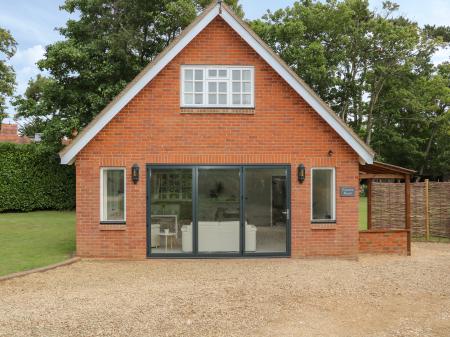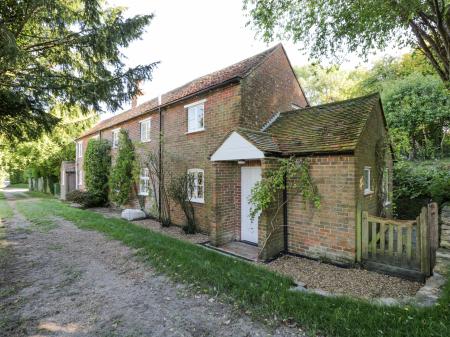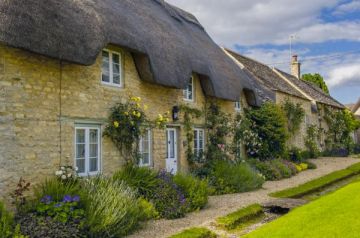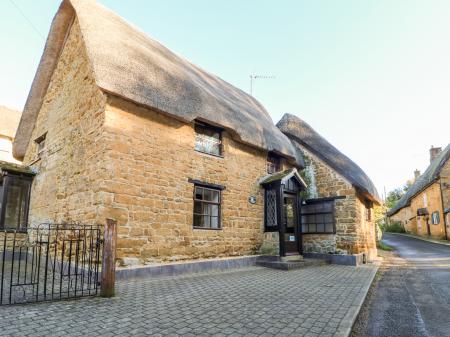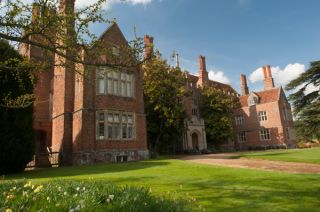
History
At the time of the Domesday survey in 1086, there were two manors at Mapledurham; one owned by the powerful William de Warrenne and the second by Milo Crispin of Wallingford. Warrenne's manor became known as Mapledurham Gurney after Gerard de Gournay, who gained the estate through marriage. In 1270 it passed to the Bardolf family, who built the superb private aisle in the nearby church. After the Bardolf male line died out the manor was sold in 1490 to Richard Blount of Iver, and it remains in the hands of Blount's direct ancestors today. That's over five centuries in the same family!

Sir Richard's son and grandson, Richard and Michael respectively, both served as Lieutenant of the Tower of London and are buried in the Chapel Royal there. However, before he died Sir Michael Blount began to build a grand new manor at Mapledurham, a house better suited to his status as a high royal official.
The house was incomplete at the time of his death and was finished by his son, Richard, around 1612. Richard and his first wife Cecily are buried in the church of St Margaret directly behind the manor house.

Sir Charles Blount (c.1598-1655) fought for the king in the Civil War, and as a result, Mapledurham was besieged and sacked by Parliamentary troops - though one must wonder how much there was left to ransack, as Sir Charles had squandered much of his family fortune and was selling off the contents of the house to pay his debts.
Misfortune followed the family when Charles's son Michael was murdered by a footman in 1649. A later owner was Lister Blount, who had two daughters, Theresa and Martha. Poet Alexander Pope was a frequent visitor; draw to court both women. In the end, neither married, but Pope remained firm friends with Martha Blount, and when he died in 1744 he left her a sizeable part of his property. Some of Pope's belongings are still on view at Mapledurham.
Later generations of Blount owners struggled with finances, in part because of their adherence to Catholicism, and they were forced to sell off many family treasures, including a large collection of historical armour. In later years, however, the house has been restored and now offers a wonderful glimpse into the past.

The House Interior
The exterior is essentially Elizabethan, but the interiors are largely Georgian and Victorian, with a wonderful, curving, Tudor staircase. Look for the carved animal heads; one of which represents a tale from Aesop. One highlight is the family chapel, built after the Catholic Emancipation Act of 1791 made it safe to showcase their Catholic faith. The decoration is in exquisite Gothic style.
Another real highlight is the Elizabethan cantilevered staircase, with wonderfully ornate carvings. The stairs seem to float on air, without newel posts to support the heavy oak beams. The stairs lead up to a saloon running the entire length of the house, with a ceiling of beautiful strapwork. Everywhere are portraits of Blounts past and present; you really get a strong sense of the long and rich family history at Mapledurham, and that's what makes it such an appealing place to visit.
Mapledurham Mill
There is much more to Mapledurham than just the house. A short distance behind the manor, on the banks of the river, is a restored water mill, the only working mill on the Thames. There has been a mill here since at least the 11th century, but the oldest part of the current mill building dates to the 15th century. The medieval mill was enlarged in the 17th century and again in 1700. The mill featured in a key scene from the 1976 film The Eagle has Landed (see below), and also appeared on the cover of the Black Sabbath self-titled 1970 debut album.
The mill has a separate admission fee from the house (though you can purchase fresh ground flour without paying to see the mill interior!). Inside the rambling old building are workshops and milling machinery, with explanatory signs telling about the milling process and the history of the site. a path leads around the rear of the building to see the working water wheel. In the cafe at the rear of the main house you can buy scones made with flour ground in the mill. The nearby river banks are a very popular spot for picnics on a sunny summer day!
St Margaret's Church
Beside the house but with a separate entrance, is the beautiful medieval parish church of St Margaret of Antioch. Much restored by successive owners of the manor, the church dates to at least the 14th century, though the font is Norman and suggests a much older history of the site. Interior features include the tomb of Sir Richard Blount and his wife Cecily (d.1628 & 1619 respectively) and a memorial brass to Sir Robert Bardolf (d.1395).
The idyllic location of Mapledurham has made it a frequent backdrop for television and films. Episodes of Midsummer Murders have been set here, and, most famously, the Michael Caine film The Eagle has Landed.
Note:
Unfortunately, as a lived-in family home, I wasn't allowed to take photos inside the house. Hopefully, you can still get a sense of this picturesque house and its setting from the other exterior photos!
Visiting
As of this writing, Mapledurham House can be visited only by a pre-booked guided tour. There are two tour options available; one taking in the house and another, longer tour that includes the historic mill and church. See the official website for tour details.
THE MILL




THE CHURCH


Cecily Blount tomb
 We've 'tagged' this attraction information to help you find related historic attractions and learn more about major time periods mentioned.
We've 'tagged' this attraction information to help you find related historic attractions and learn more about major time periods mentioned.